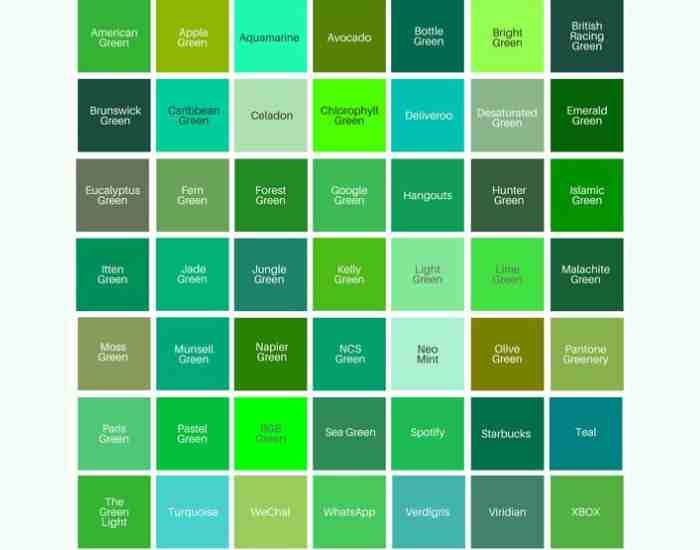Starting your own art business requires an understanding that it is both an artistic culture and entrepreneurship. The two also require understanding of the audience you’re targeting as well as developing a ‘business’ model which sets the norms of the ‘art market’. This is a brief guide which helps you through your own experiences, helps you navigate successfully making the art business built to survive. This is especially for you whether you are just starting out as an artist or wanting to turn your passion into a business.
Your voice as an artist is what makes you unique in the market. It’s what brings a new perspective and inspires others. Finding your niche in art is one of the decisions which is required because it helps you scale your business in establishing credibility. Whether you’re passionate about Digital art or Teaching Art, there’s always an opportunity in the business-maze as Megan explains ජ art businesses revolves around much understanding and expression. Whatever gets you interested, put your stamp on it. Whatever niche are you passionate about, ensure it is demanded in the market and fulfills your ambitions.

Think about artists who have specialized in eco art, pop culture digital prints, or mural commissioning, and what their success stories would be. They not only combined their work with their personal interests but also managed to find particular consumer segments who are looking for their products and are willing to pay for them.
Crafting Your Brand Identity
Your business selling art goes hand in hand with your identity which consists of your name and the logo along with the overall design. It sets you apart from the rest of the competition and that is why your art stands out in the eyes of your intended audience. It also helps in creating a personal bond between you and the buyers as it enables you to stand out among the numerous artists out there.
To allow your branding to capture the soul of your art business, you need to head about it in the following manner:
Formulate the objectives of your branding by defining the mission, vision, and the various values that your company offers.
Create a logo and colours that suit your branding.
Formulate a voice and message that is uniform for all your marketing and social media channels.
Every element of your business such as the online presence and packaging of your artworks should include the brand, and doing so will enhance the image of the program.
Critical Concepts Legally for Your Art Business.
Every business must be able to defend itself when someone tries to go against any law. The aim of this defense is to make sure that no compromises are made instead in the quality of art that’s being created. Each business comes with a set of risks and liabilities. Therefore, getting the business structure right is crucial. Different structures mean different types of licensing, taxation, proprietorship as well as exposure to risks. The only way for a business to establish itself is by getting a valid business registration as well as getting a business license as a registered agent.
According to a logical point of view, money is vital and holding on to it is equally crucial as well. When the business opens a bank account and gets credit cards, it becomes a lot easier to monitor the cash inflow and cash outflow. That’s not all, because of the businesses credit rating also improves. Getting all this together helps with setting up the back bone of the business which allows the entrepreneur to expand with the art business while handling any difficulties that may arise during expansion.
Starting Your Art Business Operationally Using the Right Techniques.
The way in which a business is operated is the deciding factor in it managing to survive and succeed. The way of doing so in this case is to be able to source the appropriate materials and tools. That will lead to better prices being set and the agility of production will also improve, all of which lead to faster creation of art and better quality.
The core of the art business starts with quality materials and tools. This is because they are not only the mediums through which one’s creativity comes to life, but they also affect the shelf life, and presumed worth of your work. In addition, availability and selection of proper supplies means considering the cost, quality, and what suits your niche.
Start by identifying potential providers of services that deal with the art materials you require. The requirement may vary from drawing supplies outlets to online retailers stocking a range of supplies at reasonable prices. Sample request where applicable should not be shied away from, demand for samples and look for reviews ensuring the required standards are met.
Once you start placing your orders regularly, haggling on price will be crucial. Supplier contact in most cases will be amenable as it is obviously to head with bargaining on price for wholesale lots or volume orders over time.
Too little ordering may results to frequent stock out period which will bring about disruptions to your creative activities or too much supply ordering which will mean capital being all tied up in barely useful stock. Employ stock control facilities and or systems ensuring a balanced position regarding stocks, production and available funds.
Tips for designing your workspace
Design and layout of your workspace affects your performance and productivity. Whether you are in a rented place or a home studio, your work space needs to be both functional and creative in the sense that the business operations can comfortably be conducted while creativity is on the forefront.
Approach the design of your area in a both artistic and functional manner. This means having space that is dedicated to creating and having smaller areas such as managing orders and doing bookkeeping that is away from where the creating of the art pieces takes place.
It is crucial to both the making of the art piece as well as in the evaluative analysis of the artwork. If not possible, go for great lamps that will enable correct viewing of colors.
Work ergonomics are also true. Treat yourself to comfortable chairs and correlate these to the table’s height and also keep all the materials and tools organized within your reach to help you avoid fatigue.
Everything in your working space should be able to inspire you. Be it other people’s artistic work, a mood cam or anything relaxing that could channel your creative juices.
How to set pricing for your artwork
Coming up with a price of the art pieces can be the biggest headache in an art business. You have to ensure your prices make you money but the very fact is that your prices are lower than those of your competitions.
The first thing that you must do is figure out all your expenses, which includes materials, framing, your time, overheads like studio rent, marketing and promotion.
Consider using the following types of pricing: cost-plus (where a fixed percentage is added to the cost), mark up price where the price is determined by what the customer is willing to spend on the item or setting a price based on what the similar art pieces are priced in other stores.
Convincing the consumers who are interested in your paintings of the worth of your artwork is paramount. Marketing materials have to serve storytelling functionalities, explaining the uniqueness of the process, quality of materials, and the creativity of the works produced.
Consistently constant with your pricing strategy simply means changing the pricing mechanism whenever it is necessary. Such changes can be in terms of the demand patterns, the feedbacks from customers and the growing brand equity.
Promoting art businesses is of fundamental importance as it establishes them in the competitive art industry. It is critical to accomplish more than having the right talent to create impactful artwork. In today’s world, which is swiftly becoming technologically oriented, it isn’t enough anymore to produce work that speaks for itself. An artist has to be active online and in the community, as their work has to be seen and more importantly, as connections have to be made.
Creating a measure of impression and reputation in the market has become critically important for artists in the contemporary world. This extends beyond just creating a website or social account, but creating a complete virtual replica of your brand and the art one is creating.
- Professional Website: It is your online gallery which holds your art in the cyberspace. Your website is meant not only to showcase the art, but it’s intended to make it easy for viewers who want to purchase your works. Adding as ‘About Me’ feature gives a personal impression making the viewers appreciate the person behind the piece of art.
- Active Social Media Accounts: The social sites like Instagram, Facebook and Pinterest have become essential features for artists. They provide visibility of your art, help in reaching more people and enable communication directly to the followers. The posting rate and the content quality are two factors that determine the social media presence.
The targeted audience can be reached out and the products can be displayed and a strong community supporting the brand can be established through efficient use of these platforms. Exciting posts and videos, insightful behind the scene content, and interactive posts would capture and retain the audience’s attention.
The power of networking and collaboration
When it comes to the art world, building networks and collaborations can awesome. This is because developing ties with other artists, companies, or any other influential figure in the industry can lead to opportunities that would otherwise remain locked.
Collaborations can come in several ways such as joint projects or creative events like art shows, social media take overs, and guest blogging. These partnerships can present your work to different people and give new aspects to the brand.
Potential collaborators as well as influencers that can help elevate your sales and visibility in the industry can be found at art fairs, gallery openings, and even industry conferences.
The specifics of artworks that showcase images that tell a story of mutual engagement and exposure do the work. For instance, an art exhibition by an artist at the local café allows the artist to reach out to more audiences and the café’s footfall increases.
Engaging with your audience
Art is created by the individuals with the intent of expressing something, sharing that art requires language of audience engagement , that is real. Your audience does not only want to engage with your work but rather, the work and the person behind it.
As I’ve explained earlier, storytelling fortifies the bond that exists between the artist and their followers. Tell how your ideas came about, which hurdles you had to overcome, and tell of the triumphs you have had. Such moral nakedness and frankness gives further invitations to the audience to walk this artistic journey with you.
There are other means for preserving the attention of the audience including social media, email lists and even blogs. Periodical newsletters, outlining new information or what goes on behind the scenes and having opportunities to question the artist without embarrassment can bring the audience closer to the artist.
Outstanding customer service is of the utmost importance. Always reply to questions as soon as possible, provide assistance on demand, and if something goes wrong, deal with the problem swiftly and professionally. Such customers are not only more likely to return, but they will also advocate for your art to be other people.
Sales and distribution
In the process of making your art work internationally recognized, the shipment of the artwork, together with the sales, is an indispensable process. They are the means through which your art pieces leave your studio and get to all the people who are interested in them. Getting to know these aspects and optimizing them may be helpful in extending the scope of your art business and even greater influence.
Every modern artist has various sales channels, each of which has its advantages and challenges. Choosing the right channels is a tactical decision that depends on the type of your art pieces, your target market, and the vision for your business.
- Online Marketplaces: Professional art replacers such as Etsy, Saatchi Art and Artfinder provides huge exposure and ease access to the global audience. They take care of quite a chunk of the traffic and even provide clientele but they don’t allow much control over branding and advertising because they are commissioned for sales.
- Your Own Website: Marketing art through personal sites gives the highest level of brand control and customer management. It requires more effort towards marketing and building an audience but it enables you to earn all the profits after selling your products.
- Physical Galleries: Art galleries are old but they sell the image and enable customers to interact with the designs within a physical setup. They do help gain valuable exposure and take a considerable part of the sales process but they usually take high cut in commission.
- Local Art Fairs: Engaging in art fairs or exhibitions provides an opportunity for interacting with potential customers and giving them the opportunity to feel your work. These require payments for booth space and construction but can generate sale and recognition in that area.
The factors of the chosen distribution have to be considered in conjunction with the goals and resources of your client’s business A multi-channel strategy which blends various ways of doing business is often the most ideal as it increases coverage while still being able to maintain some level of contact and control.
Shipping and delivery
For art businesses, and indeed any business that sells any tangible item also, the after sale stage of t3he business is just as important as the sale of a particular item. Luxury products like art do not end with custom packaging, the management of the physical product like delivery is in fact part branding.
- Packaging: The first activity that gets in contact with the customer is the packaging and therefore needs to get the utmost attention. The unboxing experience begins with packaging and should be enhanced through quality materials and creativity, remembering to include a note, a personal touch. Otherwise, packaging is just another quote of logistics.
- Shipping: Shipping is one of the most important factors that affect a customer’s experience and should be handled well. Offer different kinds of shipping suggestions whenever possible, but don’t forget to mention costs and timeframes openly when quoting prices of items. For all international orders, make all customs documents available.
- Handling Returns: Clear policy in place making it easy for clients to return any product. This assures the clientele that they can took some actions in case the artwork is not according to their expectations.
Financial Management
On the aspect of running a successful art business, financial management serves as the foundation pillar enabling any creative activity. Being able to efficiently run one’s finances especially doing day to day bookkeeping and long term budgeting not only guarantees the existence of a business but enables the creation of art work as well.
Meticulous record keeping is the basic foundation of efficient financial management. It is more than just logging onto a bank account; it requires budgeting, bookkeeping, recording, and accounting for all funds spent within the financial year. These enable not only the survival of the art business but also its capacity for growth and expansion.
- Budgeting: Preparing a budget starting from the most basic to the most comprehensive format is the most effective means of protecting oneself from the adverse effects of ignorance. This explains how you intend to earn revenue, how you intend to incur expenses, and sets and explains any targets. Such a strong budget is like a roadmap in administering and making all financial decisions within the calendar year.
- Bookkeeping services: No one understands the needs of your business better than you do. But making it a point to record every monetary activity is key to comprehending where the business stands. Considering that software has been introduced to the market such as, Quickbooks or Freshbooks where tracking sales, purchases and transactions will no longer be a hassle.
- Income and expense control: Making sure that your income and all the expenses that take place within the business are accounted for is useful in tracking such finances to know when you are hitting trends and also help in making cash flow decisions. Having tools to account for all categorized expenses and going towards the automation will ease the strain of time and effort while increasing the quality of your financial data.
These are strategies that will surely serve to protect your art business in case of a recession but they will also ensure that the business can expand. Focusing on making the art while relying on technology to remember the fine details of the finance management makes life so much easier.
Seeking Funding for Your Art Business
Providing adequate funds is central to any new or expanding project and this includes an art business. There are many ranges in the market with each with its pros and cons.
- Grants and Scholarships: Numerous customers assist art and creative businesses by offering scholarships or grants. As long as the emphasis is placed on skill or project proposals, these funds do not have to be paid back and thus provide an attractive alternative to finance such efforts or developmental phases.
- Crowdfunding: Trust art platforms that let you fan out to supporters like Kickstarter and „Indiegogo”. This is not only a source of funding but also some endorsement of your working industry. Make sure you run a strong campaign for the crowdfunding with your message and benefits for backers.
- Investment: The other options would be going out looking for investors or applying for grants. Investments do provide a higher pool of funds, although they tend to be one sided – equity dilution or the promise that the money lent will be returned with interest.
- Art Sales: In the end, there is a more saleable option which has been proven to be the most sustaining funding approach this time around – that would be selling the art pieces that you have created. Forming a good distribution channel with galleries, online sales or direct sales ensures you have recurring cash flow that can be used to further grow your business.
The correct funding choice will depend on your current situation, future goals, as well as the degree of the control and the impact it would have on the art you create. There are compromises with every option and what fits you the best will be influenced by your particular situation and aspirations for your art business.
FAQs
How do I steal my work?
In order to put an artwork in the market and allow someone to buy it, well that is an infringement of Creative Commons- the moment someone repaints a masterpiece, copyright self-destructs. First and foremost, you should copyright your work, especially if you want to republish or distribute works that you’ve produced. Stamping your digital images and signing contracts may help preserve your art on commissioned or sold contracts as well. Based on what we know from the real world – artists who actively seek out ways to protect their art are able to intimidate infringers, as well as enhance their chances of winning lawsuits because of copyright infringement.
How do I locate clients?
In order to find clients, one must sell their art as well as locate possible buyers. Websites like Instagram and Pinterest serve well for a large potential audience. Art-fairs, galleries and online stores can also get you clients searching for new art pieces. Contacting other artists and other interested people in the art can get you referrals and projects increasing your clientele. Most of the success stories focus on the need of having a strong online profile and interacting with the audience themselves for getting clients.
How do I handle slow sales periods?
Most people go through slow sales periods which proves to be a set back but that’s not the case for everyone, for some it is a time to reflect on their business strategy. During such times make sure to enhance your gem marketing skills by overhauling websites, making social media content or even sending promotional emails to previous clients. There are also cash reserves to be made by utilizing these opportunities to teach art classes, sell prints or even use licensing opportunities. Such artists are known to be the ones who have the most successful business, ones that use difficult times to acquire new skills and make new business plans.
Conclusion
It is not easy to start and run an art business but it sure is fulfilling. This guide has emphasized on some of the most critical steps, that are, now you know how to structure a great business strategy, build strong branding, devise efficient marketing, and sell your art effectively.
The essence of art is lost when it is not driven by the passion to sell and when who it is sold to is not understood. Everyone who has ventured in the art business will tell you that managing your art, getting exposure, and dealing with droughts in business are all difficult but vital parts of learning, making the journey even more worthwhile.
More Post






